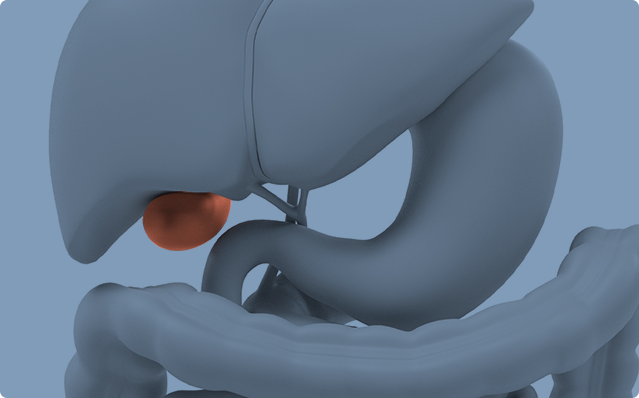
Gallstones: Conditions and Treatment
What Causes Gallstones to Form?
Gallstones are thought to be caused by a chemical imbalance of bile that is stored in the gallbladder. This may be due to one of three reasons:
- There is too much cholesterol in the bile.
- There is too much bilirubin in the bile. Bilirubin is a yellow-orange pigment that is naturally produced during the breakdown of red blood cells.
- The gallbladder does not empty normally, causing the bile inside to become more concentrated and eventually harden.
Being obese or overweight, and having a sedentary lifestyle and high-fat or high-cholesterol diet can also increase one’s risk of developing gallstones.
Signs & Symptoms of Gallstones
Most gallstones do not cause symptoms until they are large enough to block a bile duct; in which case, the following may be observed:
- Sudden intense pain in the upper right part of the abdomen that can last from 15 minutes to a few hours
- Pain between the shoulder blades and in the right shoulder
- Nausea and vomiting
- Abdominal bloating or gas
- Indigestion
Immediate medical attention from a gallstones surgeon in Singapore is required if symptoms such as persistent pain for several hours, fever and chills, dark urine and jaundice (yellow eyes or skin) are present.
How are Gallstones Treated?
Cholecystectomy
Sphincterotomy
Medication

Dr Wong Jen San
Consultant Hepatobiliary & Pancreatic Surgeon
Upon graduating from the University of Leicester and completing his basic surgical training in the United Kingdom, Dr Wong went on to complete advanced training in Singapore before embarking on his HMDP clinical fellowship in Japan—specializing in living donor liver transplantation.
Prior to establishing his own practice, Dr Wong was previously a consultant with the Department of Hepatopancreatobiliary & Transplant Surgery at SGH, an adjunct assistant professor at the Duke-NUS Graduate Medical School and a visiting consultant at the National Cancer Centre Singapore.
Read more
is a Complex and Intricate One

